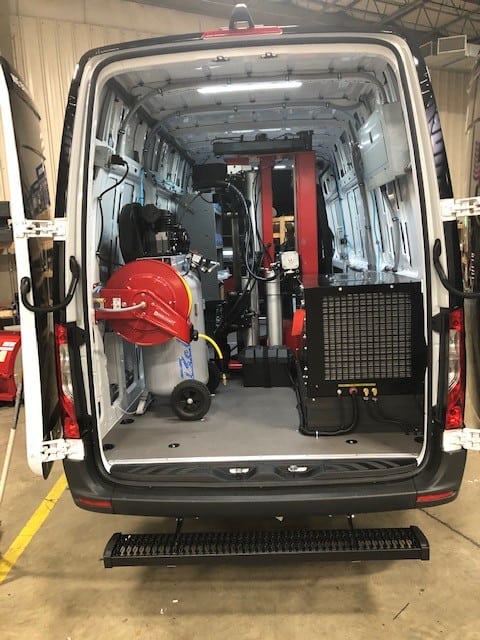Trusted Mobile Tire Service Las Vegas - On-Time Solutions
Trusted Mobile Tire Service Las Vegas - On-Time Solutions
Blog Article
Tire Solution: Proven Techniques for Optimal Tire Upkeep and Care
Maintaining optimum tire condition is critical for both safety and security and efficiency of any automobile. From making sure correct tire pressure to normal rotation and placement, there are tested methods that can substantially extend the life-span of your tires and enhance general driving experience. As we check out the intricacies of tire treatment and maintenance, we will reveal vital standards that every car proprietor should comply with for the best possible outcomes. Let's look into the world of tire service and uncover the secrets to keeping your tires in top-notch shape for the lengthy haul.
Value of Tire Pressure
Appropriate tire stress is a critical consider making sure ideal car performance and safety on the roadway. Keeping the recommended tire pressure levels given by the producer supplies various advantages. First of all, ample tire pressure promotes much better gas performance, as under-inflated tires can lead to increased rolling resistance, causing the engine to work harder and consume even more gas. Second of all, proper tire stress makes certain also walk wear, enhancing tire longevity and conserving cash over time by delaying the need for early substitutes. Furthermore, correctly inflated tires add to enhanced handling and braking capacities, critical for safe driving in different road conditions. Over-inflated tires, on the various other hand, can cause reduced traction and a harsher adventure. Alternatively, under-inflated tires are susceptible to overheating, which can bring about blowouts and mishaps. Regularly readjusting and checking tire pressure, particularly before long journeys, is a straightforward yet effective method to enhance automobile performance, extend tire life-span, and prioritize safety and security when driving.
Tire Rotation Guidelines
When considering tire turning guidelines, it is important to recognize the value of this maintenance job in making best use of tire life expectancy and maintaining optimum vehicle efficiency. Tire rotation entails altering the placement of each tire on an automobile to ensure also tread wear. Front tires have a tendency to wear much more quickly than back tires due to steering forces, making normal rotation critical for balanced wear patterns.

Advantages of Wheel Positioning
Making sure correct wheel alignment after tire rotation is critical for preserving balanced wear patterns and making best use of car efficiency. Wheel placement refers to the modification of the angles of the wheels to the maker's requirements. One of the essential advantages of wheel alignment is enhanced steering and dealing with action. When the wheels are effectively aligned, it reduces steering effort, guaranteeing a smoother and extra controlled driving experience. Additionally, appropriate wheel positioning assists to expand the life-span of your tires. Misaligned wheels can create irregular tire wear, leading to premature tire replacement and boosted upkeep prices.

Tire Footstep Depth Inspect
Performing a routine you could look here examination of tire walk deepness is vital for keeping safe driving conditions and extending the life-span of your tires. The tread on your tires plays a critical role in supplying grip, specifically in wet or unsafe problems. To examine your tire walk deepness, you can utilize a tread deepness scale or the cent examination. The recommended walk deepness goes to the very least 2/32 of an inch. It is time to change your tires to ensure optimal performance and security on the road if the walk depth is below this threshold. Unequal walk wear can suggest problems with tire suspension, alignment, or stress, highlighting the relevance of normal tread depth checks. Disregarding to check and maintain appropriate step deepness can cause minimized hold, longer braking distances, and an increased risk of hydroplaning. By including tire step deepness explore your regular maintenance schedule, you can drive with confidence recognizing that your tires remain in top condition.
Seasonal Tire Evaluation
Seasonal tire examination is a basic facet of tire upkeep that ensures tires are prepared to face the difficulties presented by various weather problems. In prep work for winter months, it is necessary to inspect the tire pressure on a regular basis as cool temperature levels can create tire pressure to drop. By carrying out regular seasonal tire assessments, drivers can prolong tire lifespan, boost gas effectiveness, and most importantly, guarantee a secure driving experience in differing climate conditions.
Conclusion
In conclusion, keeping appropriate tire pressure, revolving tires on a regular basis, lining up wheels correctly, monitoring step depth, and performing seasonal inspections are crucial techniques for optimum tire care. By complying with these verified methods, motorists can ensure their directory tires last much longer, perform better, and add to general car security. It is essential to focus on tire maintenance to stop mishaps, improve gas efficiency, and lengthen the lifespan of tires.
Ample tire pressure advertises far better fuel effectiveness, as under-inflated tires can lead to increased rolling resistance, triggering the engine to function more difficult and take in even more fuel.When thinking about tire rotation standards, it is essential to comprehend the importance of this maintenance task in taking full advantage of tire life-span and maintaining ideal lorry performance. Seasonal tire assessment is a fundamental aspect of tire upkeep that makes certain tires are ready to deal with the difficulties postured by different weather conditions. By carrying out regular seasonal tire inspections, chauffeurs can extend tire life-span, improve fuel effectiveness, and most notably, ensure a secure driving experience in varying weather condition conditions.
In final thought, preserving correct tire stress, revolving tires routinely, lining up wheels properly, keeping track of walk deepness, recommended you read and carrying out seasonal assessments are necessary techniques for ideal tire treatment.
Report this page